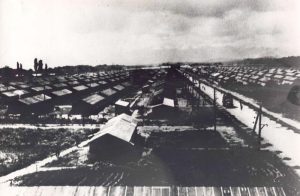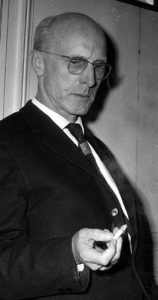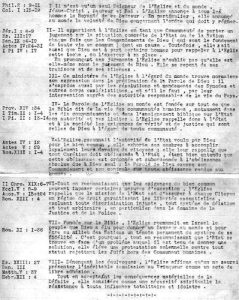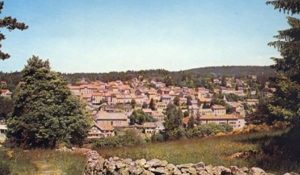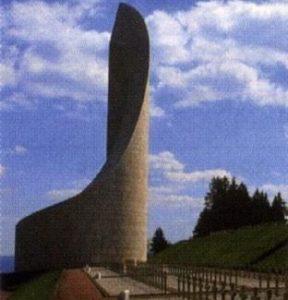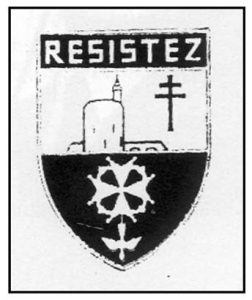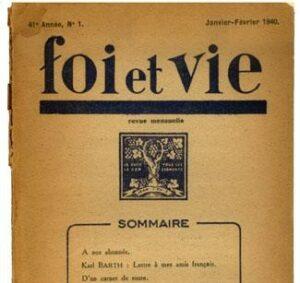Protestant opposition to antisemite laws
The Protestant break with the Vichy Regime was clearcut as early as the Autumn of 1940, mainly caused by the anti-semite laws of October 1940, which defined the status of the Jews. The rupture was officially announced in March 1941. In the name of the French Reformed Church (ERF) Marc Boegner wrote a letter to express his solidarity with the Great Rabbi Isaïe Schwartz dated 26 March 1941. This letter was published by the ultra collaborationist paper Au pilori (To the pillory) under the title “an unacceptable letter from the head of the French Protestants”. On 23 August 1941, Marc Boegner officially protested in a letter to Admiral Darlan, then vice-president of the Council, who in his response informed him of the promulgation of an even stricter law. This first public declaration of a Christian church against the persecution of the Jews, and first manifestation of disapproval of the regime, was largely circulated in the Southern zone ; and greatly influenced the behaviour of the Protestants. Even more so, as these policies were dictated by Vichy and not by the victors, as was first wrongly believed.
The text of the « Pomeyrol Theses” dated September 1941 and written by a group of prominent figures – among whom were René Courtin, Roland de Pury, Georges Casalis, Suzanne de Dietrich, Madeleine Barot and Willem Visser’t Hooft – went further and proclaimed that the Protestant church should resist “any totalitarian and idolatrous influence ».
The French Reformed Church (Église Réformée de France) protested against deportation of the Jews
In August 1942, when Pierre Laval’s government organised the deportation of all French and foreign Jews arrested following the extensive raids of the “Vel d’Hiv” in the July. In a letter sent to Marshall Pétain (20 August 1942) the Rev. Marc Boegner officially protested against the deportation of the Jews. On 22 September 1942 the national council of the ERF sent to all pastors a letter to be read from the pulpit on 4 October. It declared that « The Reformed Church of France cannot remain silent in the face of the suffering of thousands of human beings who have found asylum on our soil… The gospel obliges us to consider all men without exception as brothers… the church is obliged to make heard the cry of Christian conscience ».
On 26 September 1942, at the annual assembly of the Musée du Désert comprising more than 4,000 worshippers, anti-semitism was firmly condemned.
Historians have often stressed the elements that unite the Protestant and Jewish communities. Very briefly these are – a sensitivity to past persecutions, a certain moral and intellectual elitism, a common culture based on the Book and the Scriptures, a collegial organisation, the theological refusal of any form of anti-semitism.
Helping the Jews
The role of the Cimade (joint committee working with evacuees) was to be crucial, helping Jews and foreigners interned by Vichy, giving false identification papers and organising escape networks to Spain or Switzerland. “Refuge” zones became more and more numerous in traditionally Protestant areas, such as the Tarn, Cévennes and Drôme regions, of which Chambon sur Lignon, a village in the Vivarais region, became the symbol.
It should be noted that some Catholics shared these views. As early as July 1940, the Rev. Roland de Pury, preached in Lyons against acquiescence, and often met with the Jesuit father, Pierre Chaillet. From their common action was published the first issue of the clandestine « Cahiers du Témoignage Chrétien » (Writings of Christian Witness) in November 1941. Marc Boegner and Cardinal Grelier, archbishop of Lyons, united to oppose the raids in the Southern zone in August 1942.
The official Israeli institute of « Yad Vashem » has honoured a number of Protestants with the title « Righteous among the nations » – a name given to non-Jews who saved Jews. Among them are pastors Marc Boegner, Roland de Pury, André Trocmé, and lay people like Madeleine Barot, and last but not least, the whole community of Chambon sur Lignon.

